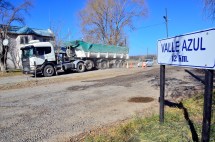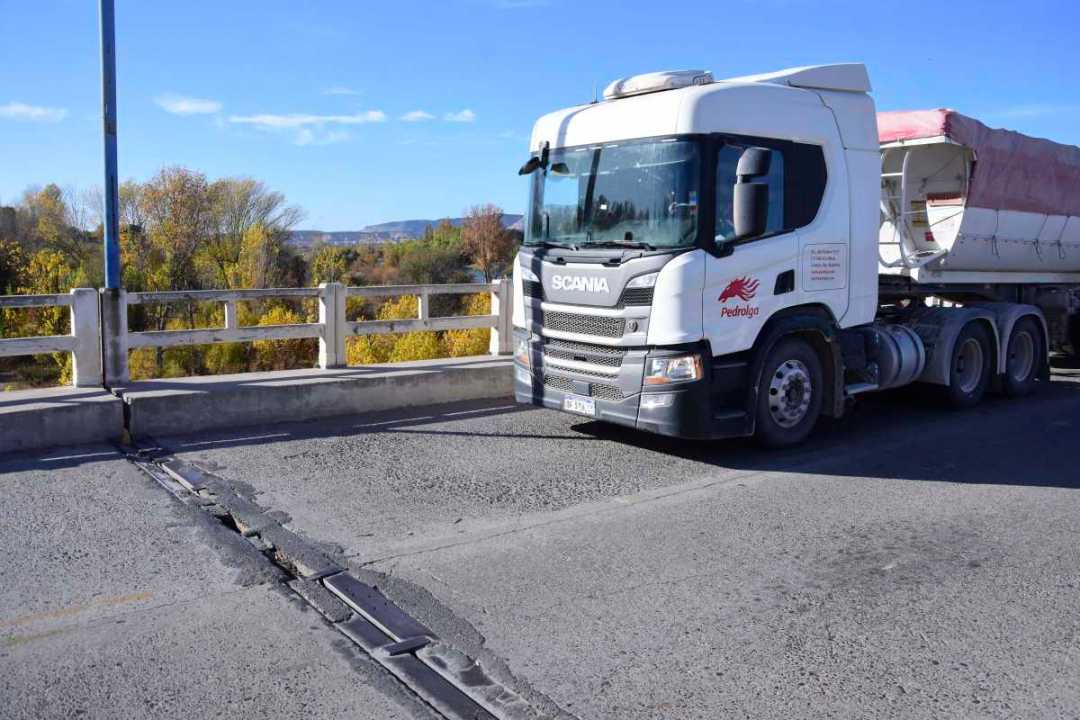The Paso Córdoba bridge had in March 2018 a movement of 56 trucks linked to the hydrocarbon industry. The data comes from the records of the municipality of Roca, which authorized transit through the roads of the Protected Natural Area. Five years later, the heavy vehicles that move along Route 6 are more than 250 per day, reaching over 300 in some days, as reported yesterday by the authorities of Vialidad Rionegrina.

What worries the residents of the Roca neighborhood near the Negro River is the “health” of the bridge, because the vibrations are more and more noticeable and from the provincial body itself they admit that the number of trucks will increase, hand in hand with the growth of activity in Vaca Muerta.
And in the face of these doubts, yesterday a disturbing fact was known: no one can find the bridge planstherefore it is unknown for sure how the structure of that mass is composed, which has 540 linear meters and is made up of 15 individual sections, joined by metal joints.
The deterioration of these unions is what is of great concern to the neighbors, who at this time anticipate a more visible protest given the lack of concrete answers from officials of different levels of government.
However, the head of Vialidad Rionegrina, Raúl Grun, assured yesterday that the image of the joints and the railings of the bridge They are “cosmetic” problems.which have no influence on the underlying issue, centered on the weight that the work inaugurated 53 years ago tolerates.
The official insisted that “no structural problems”because that was the conclusion reached by the professionals who carried out studies in recent times.
The controls to the trucks for Vaca Muerta
But despite that statement, he also said that Vialidad Rionegrina made the decision to hire a consultancy, “because we want to be calm” on applied engineering in the 60s, when the work was conceived.
It must be remembered that, before being Provincial Route 6, the road that connects the north and south banks of the Río Negro was National Route 242, which in 1979 was transferred to Río Negro.
“We are trying to reconstruct the file of that bridge, because it was not transferred with the plans, with the technical data. For that we are going to require a study of the structure, we are preparing a specification ”, Grun detailed yesterday.
The engineer said that the number of trucks circulating in the area “is increasing permanently”, reaching a variable figure “from 200 to 300 trucks a day”, although “at times there are more”.
Regarding the weight of each vehicle, he assured that they implement “sporadic controls” but that as an immediate measure, in the next few days they will incorporate posters, reducing the maximum permitted speeds, segmenting even the limit for the bridge with respect to the rest of the route.
A little over a year ago, the head of Vialidad Rionegrina had reported that a weight control station was going to be built south of the bridge, near the Police headquarters.
This work was “tied” to the resurfacing project for the entire section of Route 6, from the intersection with Route 22 towards the South Region. But yesterday it was confirmed that this bidding fell at the beginning of this year, because the Inter-American Development Bank discarded the only offer received, for not complying with the formal requirements.

- 43
- tons per truck appear in records of the Rionegrina Highway Patrol that this newspaper accessed.
- 45/49,5
- tons are the limits set by Decree 32/18 for six-axle vehicles, such as those controlled by Highway Administration.
Why the tender to resurface routes 6 and 8 fell
“It was a very big disappointment” said yesterday the head of Vialidad Rionegrina, Raúl Grun, confirming that the tender for the resurfacing of provincial routes 6 and 8 was without effect.
This process began in 2018, with the efforts of international financing, to arrive in July 2022 at the opening of envelopes, which materialized in Los Menucos.
There was only one offer -from the joint venture made up of Luciano SA, CN Sapag SA and Vial Agro SA- that pFor the first section of work, he offered $3,072,069,248.20 and for the second $2,814,175,926.39.
“Finally, the IDB, in February of this year, after analyzing the only offer, discarded it because it did not meet the requirements of the specifications,” Grun explained.
Given this, the agency activated a maintenance plan, which began in the “Zinelli field” area (south of Las Tres Cruces) and was completed yesterday north of the bridge.
The head of Roads said that the tender could be reactivated, because the project and the specifications are prepared, but the macroeconomic scenario complicates those plans.
It is an international loan to be paid for with provincial funds, cWith an original budget of 28 million dollars, but that could grow.
“There was a lot of inflation in dollars. Today we are talking about practically double”, estimated Grun.

The role of the municipality of Roca
The municipality of Roca requested information from the provincial government on the number of punt trucks that cross over the Paso Córdoba bridge, but received no answers, according to local authorities consulted yesterday by BLACK RIVER.
In March 2018, the official registry of the municipality counted 56 trucks authorized to circulate through the Protected Natural Area, but it was about vehicles that headed towards Allen, to reach the locations that YPF has on the south bank of the Negro River.
Now the vast majority of wheels circulate with sand, from the quarries of the Southern Region, to be processed in the Alto Valle and then reach all the points where the hydrocarbon extraction activity is carried out using the fracking technique.
From the municipality they clarified yesterday that These permits to circulate and the control over weight and speed corresponds to the Provincealthough they expressed concern about the impact of heavy traffic on the daily life of families in the Paso Córdoba neighborhood.
To comment on this note you must have your digital access.
Subscribe to add your opinion!
Subscribe
